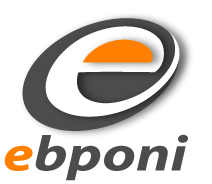A technical SEO checklist ensures your website is optimized for search engines to crawl and index your site efficiently. Here’s a comprehensive list:
1. Website Crawling and Indexing
- Crawlability: Ensure your site can be crawled by search engines. Use tools like Google Search Console to check crawl errors.
- Robots.txt File: Verify that your robots.txt file is correctly configured to allow access to important parts of your site.
- XML Sitemap: Create and submit an XML sitemap to search engines. Ensure it is updated regularly.
- URL Structure: Use clean and descriptive URLs. Avoid long, complex URLs with unnecessary parameters.
2. Website Speed and Performance
- Page Speed: Optimize your site for fast loading times. Use tools like Google PageSpeed Insights to identify and fix issues.
- Image Optimization: Compress images and use proper formats (e.g., WebP, JPEG). Implement lazy loading for images.
- Browser Caching: Enable browser caching to reduce load times for returning visitors.
- Minification: Minify CSS, JavaScript, and HTML to reduce file sizes.
3. Mobile Optimization
- Responsive Design: Ensure your site is mobile-friendly and adapts to different screen sizes.
- Mobile Usability: Check for mobile usability issues in Google Search Console.
4. Security
- HTTPS: Ensure your site uses HTTPS. Install an SSL certificate if necessary.
- Security Vulnerabilities: Regularly check for and fix security vulnerabilities.
5. Structured Data
- Schema Markup: Implement structured data using schema.org to enhance search engine understanding of your content.
- Rich Snippets: Use structured data to enable rich snippets in search results (e.g., reviews, FAQs, events).
6. Content Optimization
- Duplicate Content: Identify and resolve duplicate content issues using tools like Copyscape or Siteliner.
- Thin Content: Improve or remove thin content pages with little value.
- Canonical Tags: Use canonical tags to indicate the preferred version of a page.
7. Internal Linking
- Internal Links: Ensure a good internal linking structure to help search engines understand the hierarchy and importance of pages.
- Broken Links: Identify and fix broken internal and external links.
8. Technical Setup
- URL Redirects: Use 301 redirects for any URL changes to maintain link equity.
- Custom 404 Pages: Create custom 404 pages that provide useful information and help users navigate to other parts of your site.
- Breadcrumbs: Implement breadcrumb navigation to enhance user experience and improve internal linking.
9. Multilingual and Multiregional Setup
- Hreflang Tags: Use hreflang tags to indicate language and regional targeting.
- Geotargeting: Use Google Search Console to set country targeting if applicable.
10. Log File Analysis
- Server Logs: Regularly analyze server logs to understand how search engines are crawling your site and to identify any issues.
11. Monitoring and Reporting
- Google Analytics: Set up Google Analytics to track site performance and user behavior.
- Google Search Console: Regularly check Google Search Console for crawl errors, indexing issues, and other important metrics.
- SEO Tools: Use additional SEO tools like Ahrefs, SEMrush, or Moz for ongoing monitoring and analysis.
12. Technical Audit
- Regular Audits: Conduct regular technical SEO audits to identify and fix issues. Tools like Screaming Frog or DeepCrawl can help with comprehensive audits.
By following this checklist, you can ensure that your website is technically optimized for search engines, leading to better visibility and improved search engine rankings.
